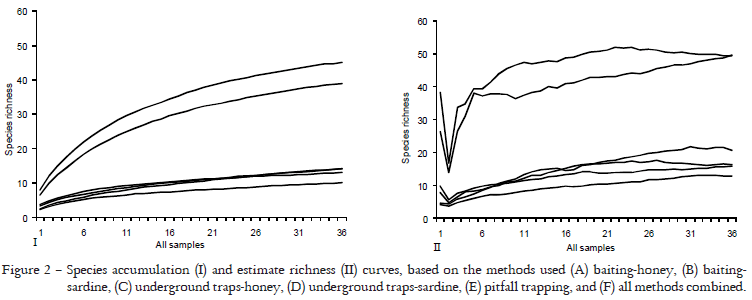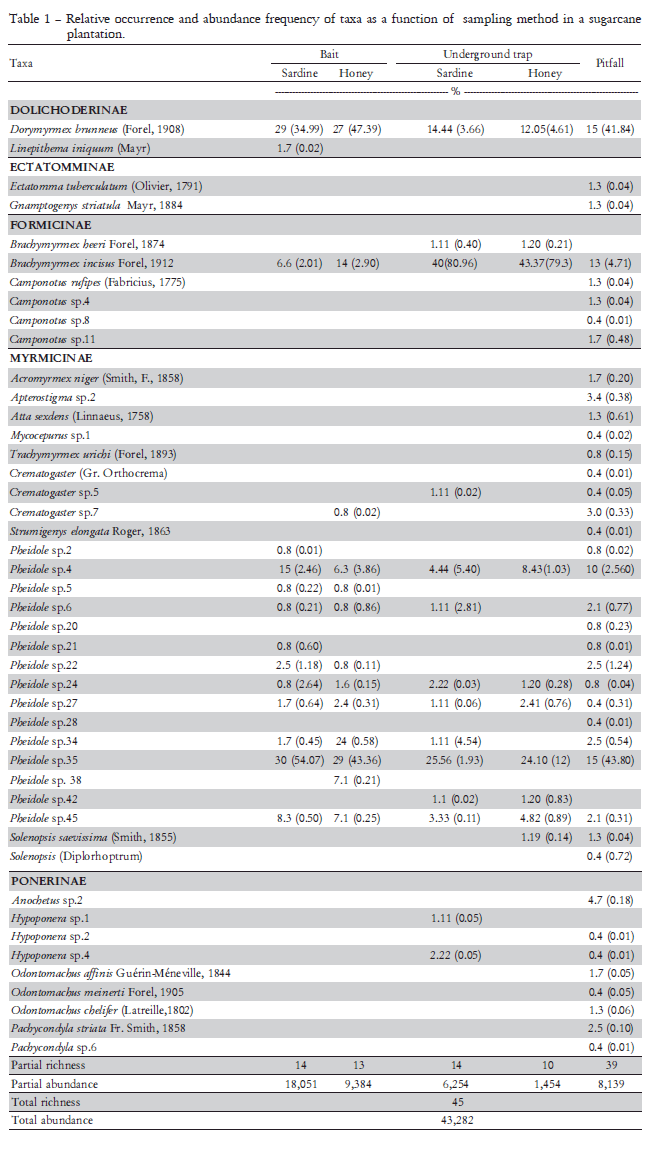The harvest of sugarcane is still traditionally done manually with the burning of straw in most cultivated areas in Brazil. However, burning has been gradually eliminated with the relatively recent use of mechanical harvesting. This will result in significant changes in the agroecosystem, as the straw will remain in the field. No investigation on Formicidae found in sugarcane plantations in Southeastern Brazil harvested by this new system has been done yet. Because of their feeding habits, many species of this family may act as predators of several sugarcane pests. In this study, the sampling efficacy of pitfall traps, baits, and underground traps with two types of attractants were evaluated. Pitfall traps gave the largest richness, while abundance was the highest from baiting. Community composition and structure differed in relation to the sampling methods used. The myrmecofauna collected with the same method with different baits was similar. Pitfall trapping was the most efficient method in this type of ecosystem; and sardine, the best attractant, due to its easy handing in the field.
pitfall; underground traps; baits; predatory ants; sampling methods





